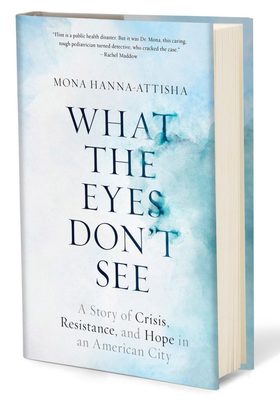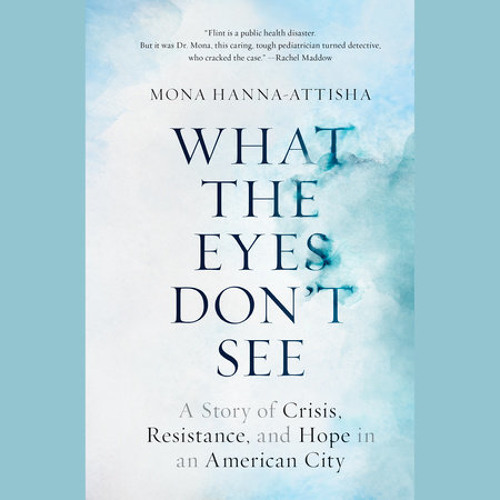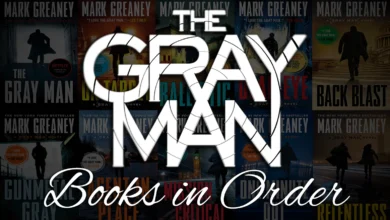A Journey into “What the Eyes Don’t See – 2024 Update

What the Eyes Don’t See

In the realm of literature, certain novels have the power to transcend mere storytelling, offering readers a profound and thought-provoking experience. One such work that captivates the imagination and challenges preconceived notions is “What the Eyes Don’t See.” This novel, written by renowned author Mona Hanna-Attisha, takes readers on a gripping journey into the hidden depths of truth and justice.
Synopsis
“What the Eyes Don’t See” is a powerful narrative that unfolds in the city of Flint, Michigan, during the water crisis that shocked the nation. Dr. Mona Hanna-Attisha, a paediatrician and public health advocate, serves as the protagonist on this riveting literary journey. The narrative exposes the harsh reality of a community betrayed by those entrusted with its well-being, revealing the dangerous levels of lead contamination in the city’s water supply.
Unravelling the Layers
At its core, the novel explores the profound implications of environmental injustice and the alarming consequences of neglecting the most vulnerable members of society. Dr. Mona’s tireless efforts to expose the truth have become a beacon of hope for a community facing a crisis that extends far beyond the visible symptoms.
The title, “What the Eyes Don’t See,” serves as a metaphor for the hidden dangers lurking beneath the surface, invisible to the naked eye. The narrative peels back layers of deception, bureaucracy, and negligence to reveal the unsettling truth about the contaminated water supply and its impact on the health and future of the city’s residents.
Themes of Resilience and Activism
Embedded within the narrative are themes of resilience and activism. Dr. Mona’s unwavering commitment to the well-being of Flint’s children and her courageous stand against powerful institutions showcase the transformative power of individuals who refuse to be silent in the face of injustice. The novel invites readers to reflect on their own roles in advocating for positive change and their collective responsibility to protect vulnerable communities.
Narrative Style

Hanna-Attisha employs a compelling narrative style that seamlessly weaves together personal anecdotes, scientific evidence, and a call to action. This multi-faceted approach humanises the crisis, allowing readers to empathise with the individuals affected while also comprehending the larger societal implications.
Legacy and Impact
“What the Eyes Don’t See” is more than a novel; it is a call to action. The book’s impact extends beyond its pages, influencing public discourse on environmental justice, government accountability, and the role of individuals in safeguarding the welfare of their communities. It has become a catalyst for change, inspiring grassroots movements and prompting policy reforms aimed at preventing similar tragedies in the future.
PLEASE VISIT:
Conclusion
In the annals of contemporary literature, “What the Eyes Don’t See” stands as a testament to the power of storytelling to effect positive change. Through its vivid narrative, the novel not only exposes the harsh realities faced by the people of Flint but also challenges readers to question their assumptions and actively engage in creating a more just and equitable society. Mona Hanna-Attisha’s work serves as a reminder that, even in the face of adversity, the pursuit of truth and justice can lead to transformative outcomes.
FAQS
What is “What the Eyes Don’t See” about?
- “What the Eyes Don’t See” is a novel by Mona Hanna-Attisha that delves into the water crisis in Flint, Michigan. It uncovers the hidden truth about lead contamination in the city’s water supply and its devastating impact on its residents.
Who is the author, and what inspired her to write this novel?
- The author, Mona Hanna-Attisha, is a paediatrician and public health advocate. She was inspired to write the novel by her first-hand experience discovering the dangerous levels of lead in Flint’s water and her commitment to exposing the truth to protect the community’s health.
Why is the novel titled “What the Eyes Don’t See”?
- The title metaphorically suggests that there are hidden dangers that go unnoticed by the naked eye. It reflects the concealed truth about the water crisis in Flint, emphasising the importance of looking beyond the surface to uncover hidden injustices.
What themes are explored in the novel?
- The novel explores themes of environmental injustice, activism, resilience, and the consequences of neglecting vulnerable communities. It sheds light on the broader implications of systemic failures and the responsibility of individuals to stand up against injustice.
How does the author weave personal anecdotes into the narrative?
- Mona Hanna-Attisha incorporates personal anecdotes to humanise the crisis, connecting readers emotionally to the individuals affected. This narrative strategy adds a personal touch to the scientific and political aspects of the story.
What impact has the novel had on public discourse and activism?
- “What the Eyes Don’t See” has sparked conversations about environmental justice, government accountability, and community activism. Its impact extends beyond literature, inspiring movements and influencing policy changes aimed at preventing similar crises.
Is the novel a call to action?
- Yes, the novel serves as a powerful call to action. It challenges readers to reflect on their roles in advocating for positive change and emphasises the collective responsibility to protect vulnerable communities from environmental hazards.
How does the author balance scientific evidence with storytelling?
- Hanna-Attisha seamlessly integrates scientific evidence into the narrative, making complex issues accessible to a broad audience.



